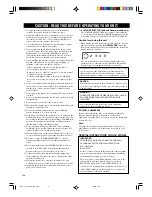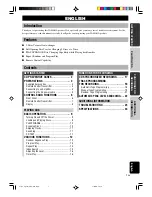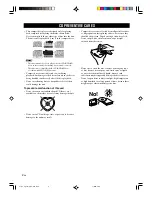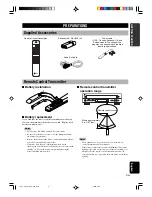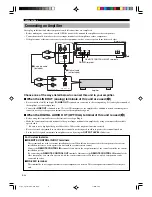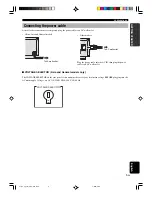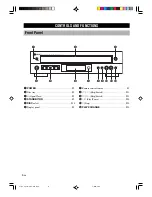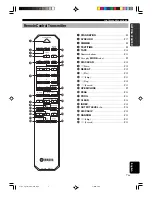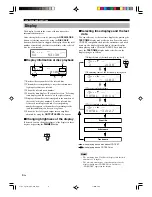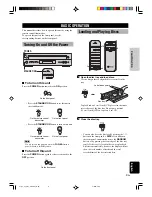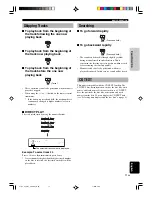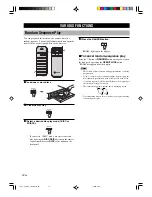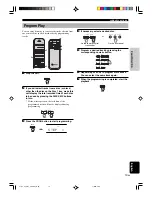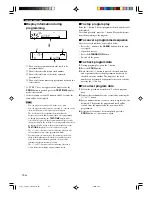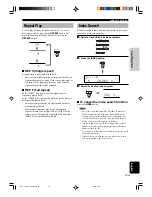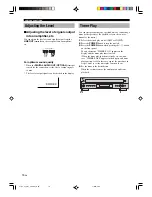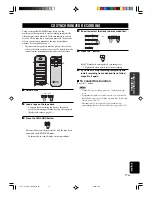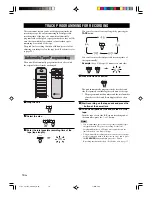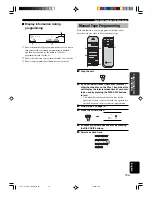
4
En
Connecting an Amplifier
Never plug in this unit and other components until all connections are completed.
•
Before making any connections, switch OFF the power to the unit and the amplifier or other components.
•
Connections should be made to the correct input terminals of the amplifier or other components.
•
If the placement of this unit causes noise in other equipment, such as a tuner, separate them from each other.
Choose one of the ways listed below to connect this unit to your amplifier.
■
When the LINE OUT (analog) terminals of this unit are used (
1
)
•
Be sure that the left (
L
) and right (
R
)
LINE OUT
terminals are connected to the corresponding (left and right) terminals of
the amplifier or other components.
•
Connect the
LINE OUT
terminals to the CD (or AUX) terminals of the amplifier. For additional details concerning these
connections, refer to the operation instructions for the amplifier being used.
■
When the DIGITAL AUDIO OUT (OPTICAL) terminal of this unit is used (
2
)
•
Before using this terminal, remove the terminal cover by pulling it.
•
Make the connection from this terminal to the optical input terminal of an amplifier by using a commercially available
optical cable.
* Be sure to use a high quality optical fiber cable. Other cables might not function correctly.
•
Be sure to attach the terminal cover when this terminal is not being used in order to protect the terminal from dust.
•
Set the level of signals output into an amplifier to max by using the
OUTPUT LEVEL –/+
buttons.
For Custom Installer
■
REMOTE CONTROL IN/OUT terminals
These terminals are used for custom installation system. When this unit is connected to the components for custom
installation system, you can operate this unit with the system remote control.
Connect the
REMOTE CONTROL IN
terminal of this unit to the output terminal of the central controller for custom
installation system.
By connecting the
REMOTE CONTROL OUT
terminal of this unit to the
REMOTE CONTROL IN
terminal of the
other component, you can also operate it with the system remote control. In this way, up to 6 components can be
connected in series.
■
RS-232C terminal
This terminal dose not support normal external component connection. This is an expansion terminal for factory use
only.
LINE OUT
RS-232C
DIGITAL AUDIO OUT
OPTICAL
OUT
IN
REMOTE CONTROL
VOLTAGE SELECTOR
230-
240V
R
L
DIGITAL IN
ANALOG IN
CD
OPTICAL
R
L
R
L
LINE OUT
DIGITAL AUDIO OUT
OPTICAL
PREPARATIONS
REMOTE CONTROL IN/OUT terminals
2
Optical cable
(not included)
1
Audio pin cable
(included)
Amplifier
RS-232C terminal
(General model)
01_En_02_star_CDC-697_G.pm
7/6/06, 0:55
4
Summary of Contents for CDC-697
Page 178: ......


